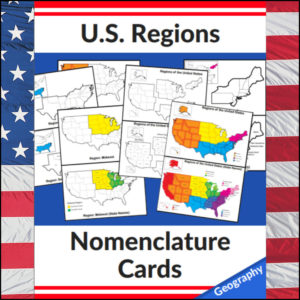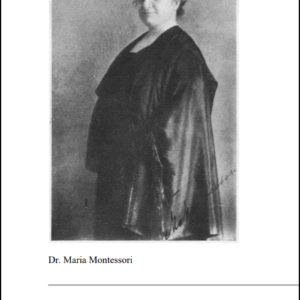Showing all 3 resultsSorted by latest
-
 $4.50Buy Now
$4.50Buy NowThis set of U.S. Regions – Geography – Nomenclature cards consists of 20 cards. Use in any study of Geography of the United States, individual state studies, in centers, as handouts, on displays, etc! This set has the U.S. divided into *4 regions as defined by the U.S. Census Bureau
Cards in this set:- Regions of the United States in color with coded key (4 regions*)
- Regions of the United States in color with coded key with state names
- Regions of the United States in b/w and separated
- Regions of the United States in b/w and separated with state names
- Northeast Region (in color displayed on b/w full U.S. map)
- Northeast Region with state names (in color displayed on b/w full U.S. map)
- Northeast Region b/w standing alone (with small insert of region in color displayed on b/w full U.S. map)
- Northeast Region b/w standing alone with state names (in color displayed on b/w full U.S. map)
- Midwest Region (in color displayed on b/w full U.S. map)
- Midwest Region with state names (in color displayed on b/w full U.S. map)
- Midwest Region b/w standing alone (with small insert of region in color displayed on b/w full U.S. map)
- Midwest Region b/w standing alone with state names (in color displayed on b/w full U.S. map)
- South Region (in color displayed on b/w full U.S. map)
- South Region with state names (in color displayed on b/w full U.S. map)
- South Region b/w standing alone (with small insert of region in color displayed on b/w full U.S. map)
- South Region b/w standing alone with state names (in color displayed on b/w full U.S. map)
- West Region (in color displayed on b/w full U.S. map)
- West Region with state names (in color displayed on b/w full U.S. map)
- West Region b/w standing alone (with small insert of region in color displayed on b/w full U.S. map)
- West Region b/w standing alone with state names (in color displayed on b/w full U.S. map)
⭐ This product is included in a $$$ SAVING BUNDLE: Regions of the U.S.A. | Geography Bundle
-
 $2.50Buy Now
$2.50Buy NowMaria Montessori educational methods: She adapted the traditional teacher-taught subjects in the arts and science so that the children could use materials to guide their open-ended research and to follow their individual interests, working to a much higher level than was previously (and is presently!) thought possible for children of this age. The elementary child, when allowed to work independently instead of being taught in groups led by a teacher, and in classes with a mixed age group of 6-12- year-old students inspiring and teaching each other, masters academic subjects usually not taught until middle or high school.
She believed that each child is born with a unique potential to be revealed, rather than as a “blank slate” waiting to be written upon. Her main contributions to the work of those of us raising and educating children are in these areas:
-
Preparing the most natural and life-supporting environments for the child
-
Observing the child living freely in this environment
-
Continually adapting the environment in order that the chid may fulfill his or her greatest potential, physically, mentally, emotionally, and spiritually.
-
-
 $2.50Buy Now
$2.50Buy NowMaria Montessori educational methods: She adapted the traditional teacher-taught subjects in the arts and science so that the children could use materials to guide their open-ended research and to follow their individual interests, working to a much higher level than was previously (and is presently!) thought possible for children of this age. The elementary child, when allowed to work independently instead of being taught in groups led by a teacher, and in classes with a mixed age group of 6-12- year-old students inspiring and teaching each other, masters academic subjects usually not taught until middle or high school.
She believed that each child is born with a unique potential to be revealed, rather than as a “blank slate” waiting to be written upon. Her main contributions to the work of those of us raising and educating children are in these areas:
-
Preparing the most natural and life-supporting environments for the child
-
Observing the child living freely in this environment
-
Continually adapting the environment in order that the chid may fulfill his or her greatest potential, physically, mentally, emotionally, and spiritually.
-

